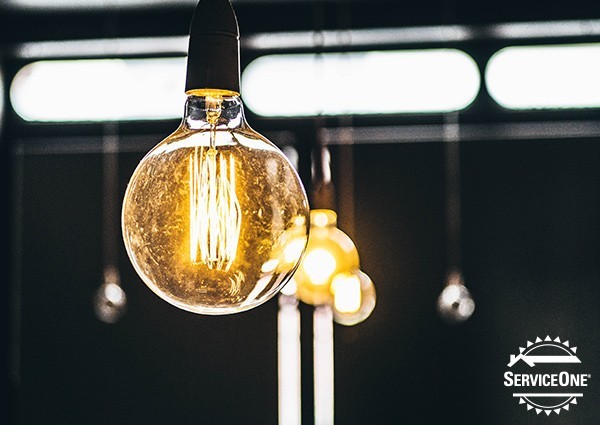Whether winter or summer, when a storm rolls in and the power goes out, it can be a huge hassle
More parts of modern homes rely on electricity than ever before. Your running water, lights, heating/air conditioning systems, electronics and fridges/freezers are all reliant on your home having power!
The worst part of power outages is the fact that it’s often impossible to know how long your family will be without electricity. Storms normally affect multiple areas of the same town differently, leading to imprecise estimations of exactly when power will be restored to you.
A whole-house generator installed by ServiceOne could be the solution to all of these problems!
If you want to find out how to power your whole house with a generator, read on!
How will you fuel your generator?
Generators come in different fuel types depending on their size, brand, location and other factors.
The most common fuels for powering your generator are natural gas, liquid propane, diesel or liquid gasoline. Most of the generators we install use either propane or natural gas, but we can accommodate other requests depending on your needs.
The main thing to consider when installing a propane-based generator is whether it will require an external fuel tank, either portable or permanent. Natural gas generators can usually be outfitted to run on the home’s existing natural gas lines, which might be easier for some homeowners.
If you’re not sure which fueling solution is right for you, be sure to ask us. We can survey your situation and recommend the best kind of generator for you.
How much power do you need?
Calculating the amount of power your house requires can be a daunting task, but we can help!
Most generators measure capacity in kilowatts. If you’d like to go through your home and convert the total power demands of your main appliances to kilowatts, here’s the formula:
(Starting Amps) x (Volts) = (Watts) (divide Watts by 1,000 to get Kilowatts)
The main consumer of power that should be accounted for is your air conditioner. Many generators automatically cycle it on and off depending on the power being used at any given time.
The highest-end whole-house generators can handle anywhere from 27 to 48 kilowatts. A good generator for a small home might only need a 22 kilowatt capacity, for example. We’d generally recommend a generator with 25% more capacity than you think your house demands.
What kind of transfer switch is best?
A transfer switch is the mechanism that allows power demands to be transferred from your home to the generator.
This can be an automatic process depending on your home and the generator you choose. It works by continuously monitoring your home’s power supply, then automatically jumping into action when it senses that power has gone out. Delay times between the power outage and your generator kicking in can be as little as a few seconds!
Before we install your generator, we’ll need to check your electrical service panel – the metal door that contains all of your breaker switches. Most homes have a main breaker of around 200 amps, which must be mirrored by your transfer switch.
We hope this guide has gotten you thinking about how to power your whole house with a generator installed by ServiceOne. Contact us for details!
********
With our team of qualified, courteous ServiceOne air conditioning professionals, we will keep your home or business comfortable year-round! For over 25 years, ServiceOne has been trusted to provide top-notch sales and service to homes and businesses in the Omaha/Council Bluffs metro area and in Dubuque, Iowa. With over 90 employees standing by ready to help, you can always trust us to deliver 100% satisfactory service. We also offer home warranty & service agreements, plumbing services, electrical services, appliance repair, and help with generators and home and business automation. For more information about our services, contact us today!

